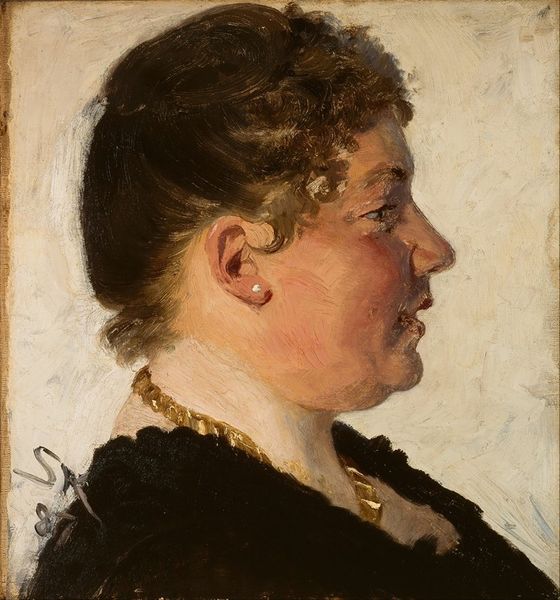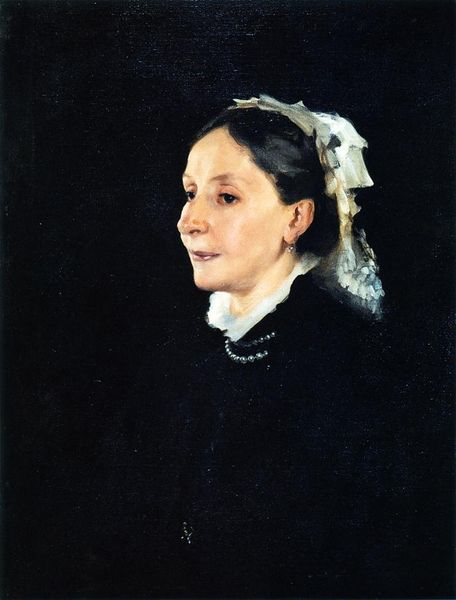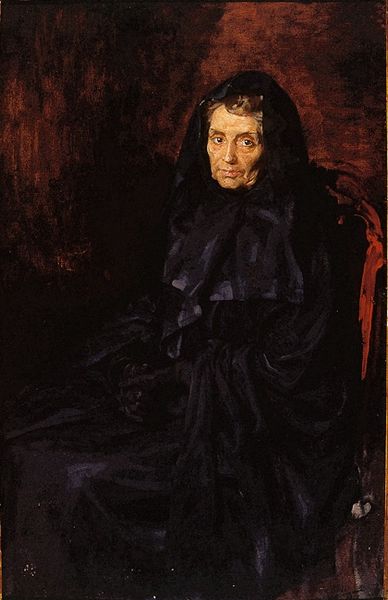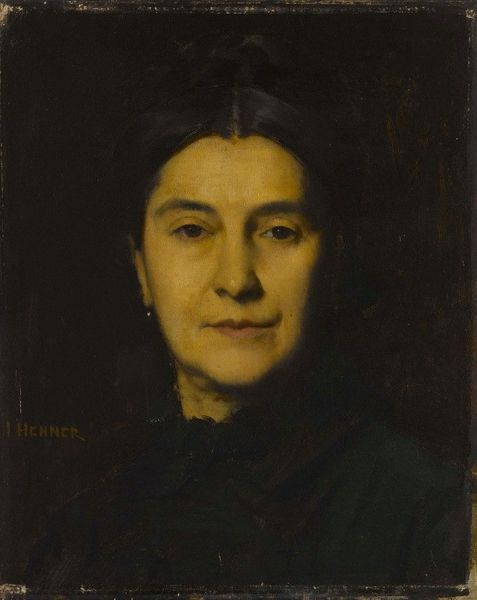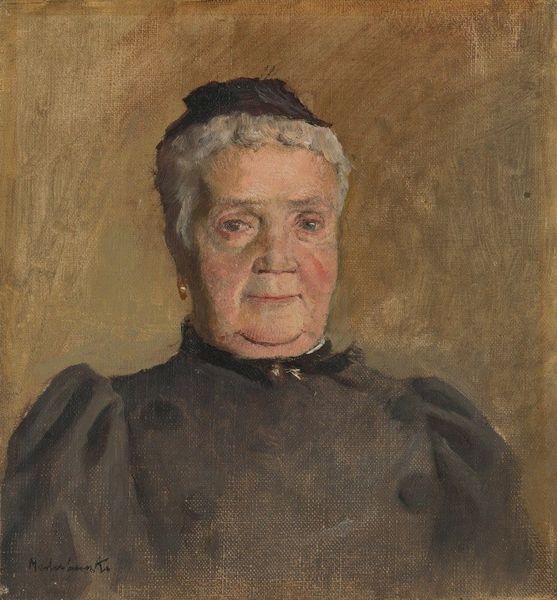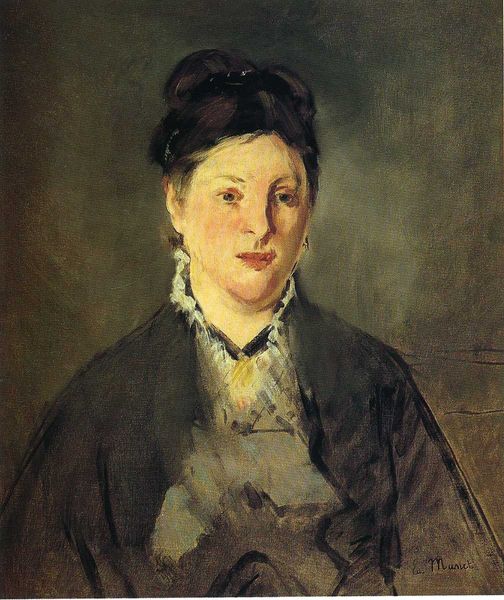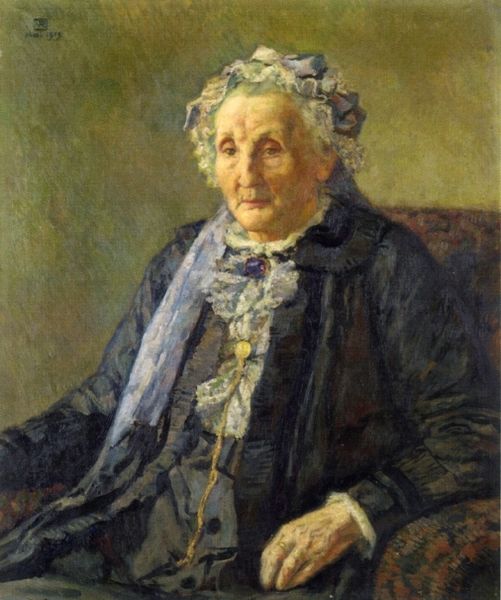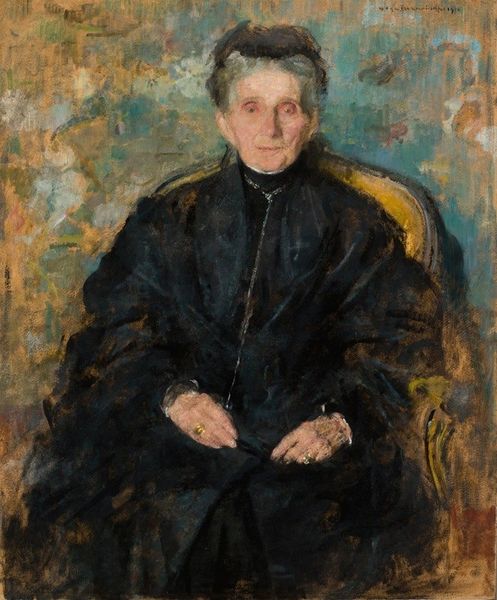
Copyright: Public Domain: Artvee
Editor: This is John Singer Sargent’s 1879 oil painting, "Mme. François Buloz." The stark contrast is so striking, she almost seems to emerge from the darkness. What catches your eye in this portrait? Curator: Well, let’s consider the social context of portraiture in the late 19th century. It wasn’t just about capturing likeness; it was about conveying status and wealth. But look at the *materiality* here. The thick application of oil paint, the almost brutal brushstrokes, especially in the background, are these normally how wealth and status would be displayed? Editor: I guess not. So you're saying the materials themselves, and how Sargent *used* them, are kind of challenging that traditional depiction? Curator: Exactly. It’s about production. Sargent isn’t just passively representing Madame Buloz. He's actively constructing her image through the very act of painting. The labor involved, the visible brushstrokes... they all contribute to the meaning. Do you think it could point to an emergent bourgeoise’s values on effort and labour over birthright? Editor: That's interesting. It almost democratizes the image, showing the *work* that goes into creating this illusion of status. Curator: Precisely. And how does that understanding shift your initial perception of the painting's "mood"? Editor: It definitely makes me see it as less about simple elegance and more about a conscious construction of identity, considering the social implications embedded in those paint strokes. Curator: It also forces us to look critically at portraiture, and the systems of patronage that sustain artistic production. A constant cycle of labor, material, and consumption, what do you think? Editor: I’m so glad you shared that, that has completely transformed how I see portraits. I will now examine all brushstrokes. Curator: The magic is in the material.
Comments
No comments
Be the first to comment and join the conversation on the ultimate creative platform.


